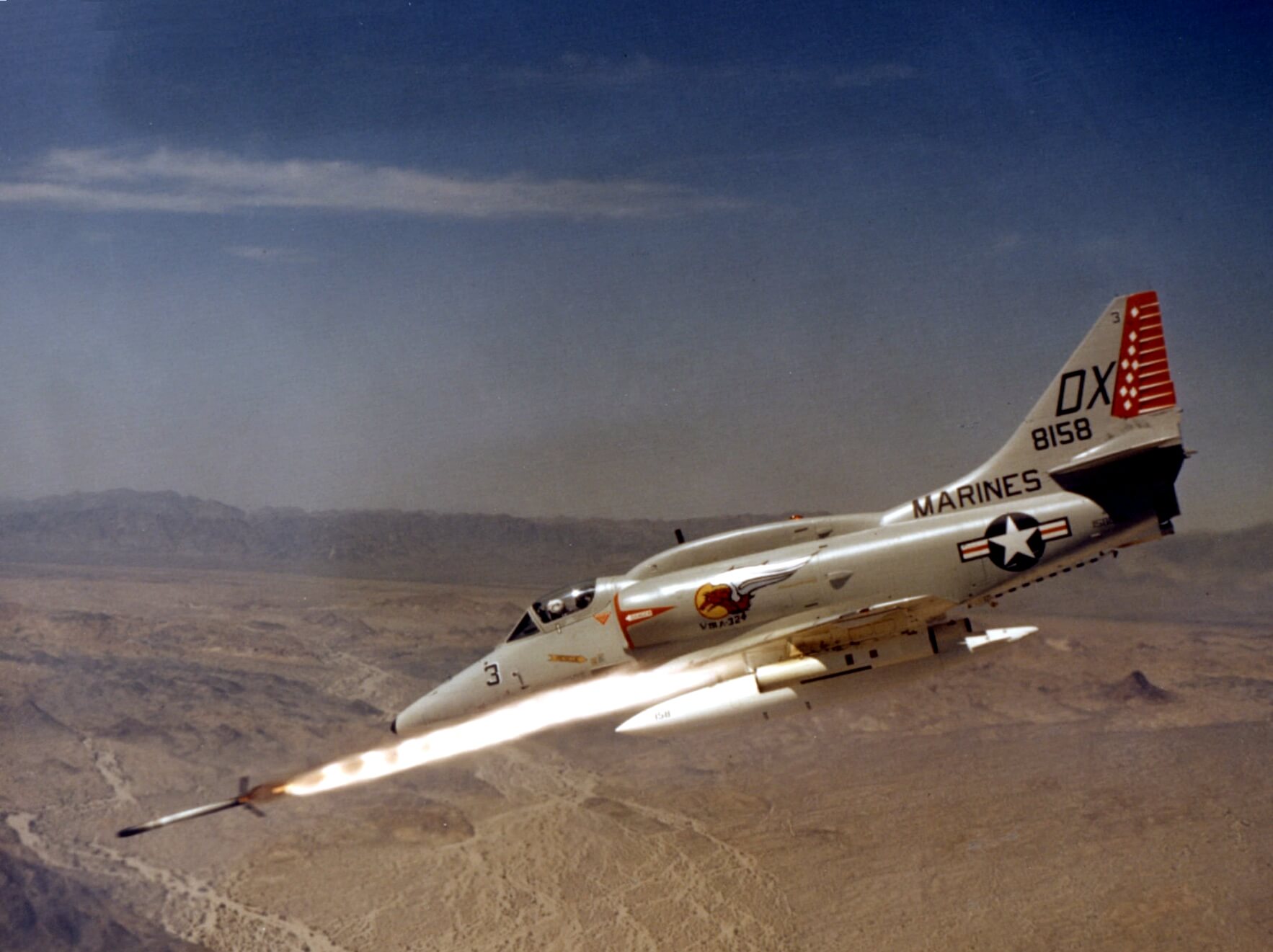Ukraine’s aerial arsenal received a boost straight from the annals of American military history when the venerable Zuni aerial rockets, remnants of a bygone era, found new life in the ongoing conflict, raining down on Russia’s forces like an echo from the past.
Recently, General Serhiy Golubtsov, the chief of aviation for Ukraine’s Air Force Command, indicated a remarkable fact: Ukraine has received the entirety of the United States’ stockpile of Zuni aerial rockets.
These aging but formidable weapons, once a mainstay of American airpower, have been expended in combat, leaving no more available for acquisition.
The Zuni rockets, with their distinctive folding fins and modular design, have a storied past that stretches back to the latter stages of World War II. Originally conceived as a 5-inch anti-aircraft rocket, the Zuni lineage evolved through various iterations, culminating in the powerful and versatile weapon that Ukraine now wields.
AfriPrime App link: FREE to download...
https://www.amazon.com/Africircle-AfriPrime/dp/B0D2M3F2JT
While the rest of the world has largely moved on to more sophisticated guided munitions, Ukraine’s Su-25 Frogfoot attack aircraft have embraced these aerial relics, arming themselves with the Zuni rockets supplied by the United States.
Social media has already captured glimpses of these aircraft in action, last year raining down the Zuni’s fury upon unsuspecting Russian targets.
But the Zuni’s reign may be short-lived, for General Golubtsov has revealed that Ukraine’s Air Force is already preparing to test Ukrainian-made guided aerial bombs, ushering in a new era of indigenous aerial firepower.
In an unprecedented show of support, the United States has poured a staggering $51.9 billion in security assistance into Ukraine since the start of President Joe Biden’s administration. This colossal aid package since the Russian invasion on February 24, 2022, has become a lifeline for Ukraine’s defense efforts.
The details of this monumental commitment have been laid bare on the website of the U.S. Department of Defense, with a comprehensive list of promised weapons made public. Among this formidable arsenal, a particular relic from America’s military past stands out: the legendary Zuni aerial rockets.
According to official records, the United States has pledged to provide Ukraine with more than 6,000 of these fearsome air-to-ground rockets, weapons that can function as both offensive and defensive tools in the skies above the conflict zone.
The transfer of these vintage but potent Zuni rockets gained further momentum in January 2023, when the Pentagon confirmed the delivery of 4,000 Zuni units as part of a staggering $3 billion military aid package.
The Zuni Rocket’s Enduring Legacy
The Zuni aerial rocket, a weapon system thrust into the heart of the conflict in Ukraine, traces its origins back to the crucible of World War II. Born from the necessity of providing tactical aircraft with formidable air-to-ground firepower, the Zuni’s lineage is a testament to the ingenuity and adaptability of military technology.
In the latter stages of the war, the United States military introduced the first iteration of the 5-inch rocket, a potent armament that evolved from earlier anti-submarine rockets employed by the Navy. This initial design, known as the Forward-Firing Aircraft Rocket (FFAR), combined the motor from the anti-submarine variant with the warhead of an anti-aircraft shell, marking a significant milestone in aerial warfare.
Not content to rest on their laurels, American engineers soon unveiled the High-Velocity Aircraft Rocket (HVAR), an upgraded version boasting a larger motor, enhanced speed, and increased destructive capabilities. This weapon quickly proved its worth on the battlefields of the era, solidifying its place in the annals of military history.
AfriPrime App link: FREE to download...
https://www.amazon.com/Africircle-AfriPrime/dp/B0D2M3F2JT
As the post-war years unfolded, the Navy continued to refine and innovate, introducing the folding-fin design that enabled streamlined external pods to carry multiple rockets simultaneously. This advancement ushered in the FFAR designation, laying the groundwork for the iconic Zuni rocket that would soon emerge.
Introduced in the late 1950s, the Zuni FFAR embodied the very essence of modular design, allowing for the deployment of various warhead types, fuzes, and motors.
At a formidable 110 inches in length and over 100 pounds in weight, this aerial behemoth became a staple of the United States’ airborne arsenal and saw extensive action during the Vietnam War.

However, the Zuni’s legacy is not without its darker moments. In July 1967, a tragic incident aboard the USS Forrestal aircraft carrier etched the rocket’s name into infamy when an accidental firing on the deck sparked a devastating fire, causing significant damage and loss of life.
As the years passed and guided munitions rose to prominence, the basic Zuni rocket gradually faded from the forefront of the American arsenal. Yet, the ingenuity that birthed it lived on, manifesting in more modern variants like the Wrap-Around Fin Aerial Rocket (WAFAR), which boasted redesigned nozzles, fins, and smokeless propellant.
The Zuni rocket’s journey is a testament to human ingenuity’s resilience, a living embodiment of the adage that necessity is the mother of invention. While Zuni’s days may be numbered, these aerial veterans have once again proven their worth, defying obsolescence and raining down their unique brand of destruction upon those who would threaten Ukraine’s sovereignty.
As the echoes of its explosive history resonate across the modern theater of war, the Zuni stands as a reminder that even the most unlikely of technologies can find new life and purpose in the most unexpected of circumstances.
AfriPrime App link: FREE to download...


